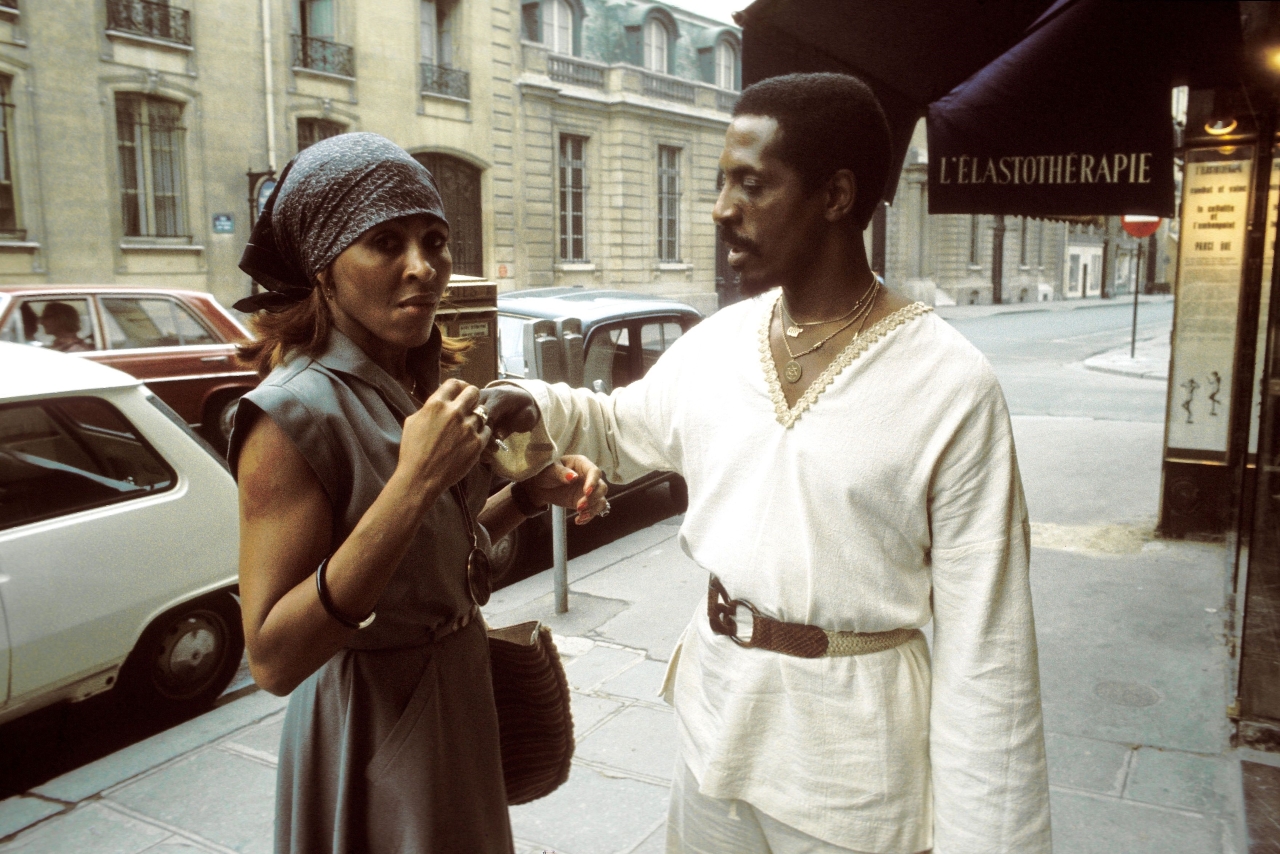⚡ The Beginning of a Storm
They were fire and thunder.
From the moment Tina Turner (then Anna Mae Bullock) stepped onto a St. Louis nightclub stage in 1957 and grabbed the microphone from Ike Turner’s band, something cosmic sparked.
Her voice — raw, unfiltered, almost supernatural — made the audience turn their heads. Ike, the sharp-suited guitarist and bandleader, knew instantly what he’d found.
Within a year, she was the centerpiece of his band The Kings of Rhythm. By 1960, with the single “A Fool in Love”, they had become Ike & Tina Turner — a force of sound that blurred gospel, soul, and pure rock & roll energy.
They were unstoppable on stage: Tina, barefoot and wild, hair flying, voice tearing through the air like a whip; Ike, stoic, controlling, orchestrating every note from behind his guitar.
Their chemistry was undeniable — and so was the tension underneath.

🔥 The Rise of a Power Duo
In the 1960s, Ike & Tina became one of the most electrifying live acts in America.
They opened for The Rolling Stones, backed Phil Spector in the studio, and turned out hit after hit: “River Deep – Mountain High,” “Proud Mary,” “Nutbush City Limits.”
Their sound was volcanic. No one on earth performed like Tina Turner.
Mick Jagger once said he learned how to move on stage by watching her.
Even Elvis Presley admired her stage command, once calling her “the most exciting woman in show business.”
But behind the spotlights and the sequins, a darker truth was growing — one that would shatter the myth of the perfect musical partnership.
💣 Behind Closed Doors
Ike Turner was a musical genius, no doubt. He discovered talents, wrote arrangements, built one of the tightest touring bands in the country.
But he was also controlling, jealous, and often violent.
Tina would later reveal in her memoir I, Tina that life with Ike was a prison behind the spotlight — filled with manipulation, abuse, and fear.
He dictated her performances, her look, her finances, and her every move.
“On stage,” Tina said, “I was free. But off stage, I was trapped.”
The more famous they became, the worse it got. Drugs, long tours, constant pressure — it all spiraled. By the mid-1970s, Tina was physically and emotionally exhausted, her spirit buried under the image of the unstoppable performer the world adored.
🎤 The Breaking Point
It all came to an end on October 15, 1976.
That day, after a turbulent concert in Dallas, Texas, Tina finally walked away.
Literally.
With nothing but 36 cents and a Mobil gas card in her pocket, she fled their hotel room while Ike slept. She crossed a freeway in the middle of the night, bruised and terrified, and never looked back.
That date marked the official end of Ike & Tina Turner — not just the duo, but the chain that had bound her for nearly two decades.
It wasn’t just a breakup. It was liberation.
For Tina, October 15 wasn’t the end of her music. It was the beginning of her life.
🌅 The Long Road Back
The divorce took two long years. When it was finalized, Tina asked for nothing but her name.
She started over — playing tiny clubs, appearing on game shows, taking any gig she could find. She was 39 years old, broke, and forgotten by the industry that once worshipped her.
But she never gave up.
By the early 1980s, her comeback was unstoppable. “What’s Love Got to Do with It” (1984) made her a global icon — not just a survivor, but a legend.
She won four Grammy Awards, filled stadiums across the world, and reclaimed her narrative.
That powerful, joyful energy people had seen all along — now it was hers alone.
⚡ Ike’s Downfall
Ike Turner’s story went the other way.
He battled addiction, legal troubles, and his own demons for years.
Though he was later recognized as a foundational figure in rock & roll, his legacy was permanently shadowed by his violence and cruelty.
In interviews later in life, he showed flashes of regret — but the damage was done.
When he died in 2007, Tina simply said, “I’ve forgiven him… but I can’t forget.”
💫 The Legacy of Ike & Tina
Together, Ike & Tina Turner created a sound that changed music forever.
Their fusion of rhythm and energy laid the groundwork for soul-rock and inspired countless artists — from Janis Joplin to Beyoncé.
Their story is one of brilliance and destruction, of beauty born from pain.
And at the center of it all was Tina: a woman who transformed suffering into power, whose resilience became one of the most inspiring comebacks in entertainment history.
“Good or bad,” she once said, “it all made me who I am.”
When people remember October 15, 1976, they often think of it as the day a duo ended.
But in truth — it was the day a woman found her freedom.